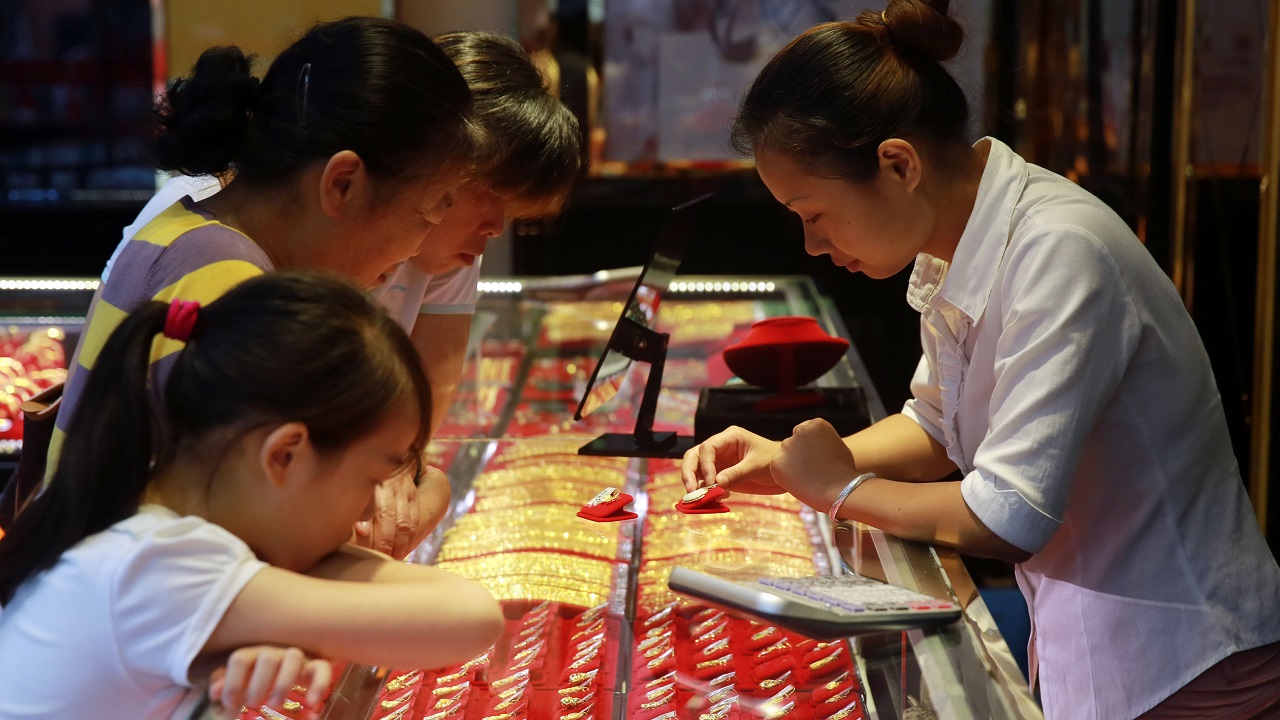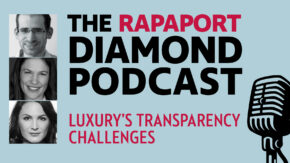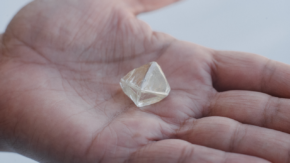The weeks before Chinese New Year can be some of the busiest for the region’s diamond trade. The festival — which occurs on February 10 this year — doesn’t offer the sales peak that the December holiday season does in the US. But when consumers are in a good mood and the economy is strong, they’ll go out and spend.
This year, however, there are no frantic efforts to fill retailers’ final orders. Suppliers and jewelry manufacturers are closing early for the holiday. Some Indian cutting firms have brought their staff back from their Hong Kong sales offices, which serve the mainland market. Something is different about this season — and not in a good way.
“We generally would expect by the first week of February [when the New Year falls as does this year], the factories would be closed, but this year, last week was the last working week for most of the factories,” said Rishi Mundra, managing director of Hong Kong-based diamond manufacturer and trader Stellar Group HK. “The Chinese market right now is extremely slow.”
Major jewelers have already made this clear.
Luk Fook, which is based in Hong Kong but has a considerable China business, reported a 35% slump in same-store sales of diamond jewelry on the mainland for the fiscal third quarter that ended December 31, even as gold-jewelry sales rose 23% by the same measure. (This only includes the company’s self-operated brick-and-mortar stores that have been open for a year and is for “fixed-price” jewelry, which means designed pieces selling at prices that the retailer determines and not just by the weight of gold.)
The company’s overall retail sales of fixed-price jewelry on the mainland dropped 25% for diamond pieces but jumped 43% for gold jewelry. In response, Luk Fook said it would promote gold over diamonds to improve sales.
Economy and society
The crash in diamond demand — which rival Chow Tai Fook has also documented — has come in the context of a severe economic crisis in China.
It began with the US-China trade war, which has been ongoing since 2018 and dented Beijing’s ability to export to the world’s most important consumer economy. China was then thrown into the world’s first coronavirus crisis in early 2020 and has never fully recovered from the lockdowns, despite ending its “zero-Covid” policy in January 2023. Gross domestic product (GDP) rose 5.4% in 2023, according to the government’s National Bureau of Statistics, though many question the official figure.
The real-estate market has collapsed — an important turn of events for a country that places a large proportion of wealth in property. Earlier this week, a court in Hong Kong ordered the liquidation of Chinese real-estate developer Evergrande.
At the same time, China’s economy has suffered from sluggishness in overseas markets, with the country’s total exports down 4.6% at $3.38 trillion in 2023, its customs department reported.
Meanwhile, the end of Covid-19 restrictions has enabled consumers to spend on domestic travel rather than physical products. The reopening of borders has also enticed people to splurge outside the mainland, to the notable benefit of Hong Kong, which has seen a rebound in luxury demand.
But the problems go deeper. The number of marriages in China dropped 10.5% to 6.83 million in 2022, the lowest since records began in 1986, according to a CNN report that cited data from China’s Ministry of Civil Affairs. Population decline and social changes are minimizing the opportunities for selling diamonds.
“This is a major problem — the [number of] wedding couples are tremendously reduced,” said Lydia Geng, president of China-based diamond wholesaler Huabi Diamond (HB).
‘My mom’s brand’
The large overseas labels have coped better than the rest of the market. Swatch Group’s watch and jewelry segment enjoyed growth in the double-digit percentages for 2023, the owner of Harry Winston reported last week.
The wealthy have been less affected by the crisis and are more likely to use their money to buy jewelry from Tiffany & Co. or Van Cleef & Arpels, said Mundra. Plus, millennials aren’t so keen on the region’s home-grown jewelry sellers, such as Chow Tai Fook, seeing them as “my mom’s brand, not mine,” Geng added.
“If they’re able to spend $2,300, $3,000 or $5,000, [they’d rather] buy the [global] brand than the local Chinese brand,” Geng said.
These brands tend to use D- to F-color, VS-clarity diamonds, she added. She has also seen steady demand for the 0.005- to 0.01-carat, G to I, VS or high SI1 stones that tend to appear in gold jewelry.
However, diamonds larger than melee have struggled.
“Last year, we almost had no orders from our clients…for 50 points [0.50 carats],” Geng continued. “Maybe a little bit [for] 1 carat…if it’s cheap enough.”
Supply imbalance
This split has coincided with an awkward supply situation.
The category of melee that traders call “+6.5 -11” — referring to around 0.025 to 0.07 carats — is suffering from shortages in the Indian market, with Chinese clients unhappy about the resultant high prices for this category, Mundra explained.
But in solitaires — over 0.30 carats — the inventory situation suggests life is not going to get better for suppliers soon.
“If you talk on the solitaire side, most [retail] companies [in China], even though they haven’t been buying for well over one-and-a-half or two years, have anything from six to seven months of stock in high-quality and collection goods,” revealed Mayank Mehta of Indian manufacturer Rosy Blue’s Hong Kong department. This “indicates that they’re not looking to buy anything right now,” he added.
Going for gold
Why is gold performing better? Industry participants say low consumer sentiment pushes them away from diamonds to cheaper items such as colored gemstones, pearls and even lab-grown diamonds, though the latter is still not making a big splash in China. They also head to the yellow metal, which they consider a safe haven for investment. Gold is a traditional preference from Chinese shoppers and offers the option of relatively cheap pieces and appealing designs enabled by technology.
However, there’s another reason that might not be so pleasant for the diamond industry to hear.
In the past, Chinese people considered both gold and diamonds as investment-worthy materials, said Mehta. But retailers with whom he has spoken believe consumers are not seeing diamonds in that light anymore, raising the concern they’ll be limited to fashion jewelry, he added.
“A lot of people will buy colored gemstones because the colored-gemstone price is going up,” echoed James Pan of LAC Fine Jewelry, a retail brand based in Hangzhou, China. “They will spend more money and after 10 years they will make money. But [with] diamonds, [with] so many lab-grown diamonds [affecting the market], they will worry about the price going down.”
Consumers know a lot about the diamond market. Social media is very influential in China, and even a trade-centric story such as De Beers’ price reduction at its January sight has reached enough eyeballs to have an effect on how consumers relate to the product.
“From what I’ve understood from retail clients, people have come into stores with newspaper or media articles asking, ‘Have diamond prices fallen this much?’” Mehta said. “So you have a situation where negative publicity drives sentiment.”
China’s economy problems might take major measures to solve, such as repairing ties with the US and other Western countries. The social challenges to the jewelry industry may be harder still to tackle. In the meantime, overseas diamond companies will continue to exit the region unless something changes, said Mehta.
“I don’t think people are giving up on Hong Kong or China,” he surmised. “It’s a huge market. Everyone has come to terms with that. The only problem is, how long is this going to last? Is China going to mend its [relations] with all these countries with which it has differences right now? I think there’s only so much loss that people are able to handle right now.”
Main image: Consumers at a jewelry store in Beijing, China, in 2013. (Shutterstock)
Stay up to date by signing up for our diamond and jewelry industry news and analysis.



